Shortly after this,probably about the year 1493A.D.,Sultan Yusuf Adil again marched to recover the lost territory and advanced to the Krishna,but falling ill he halted for two months;and Firishtah gives us the following account of what occurred.This has been already alluded to,but is now given in full:--"In this interval Heemraaje,having settled his dissensions,[178]advanced with the young roy at the head of a great army to Roijore,which struck terror into the army of Adil Shaw,for whose recovery earnest prayers were offered up by his subjects."...(The prayers were answered and the Sultan recovered.)"Intelligence arriving that Heemraaje had crossed the Tummedra and was advancing by hasty marches,Eusuff Adil Shaw ordered a general review of his army ...(and advanced,entrenching his camp a short distance from the Hindus).Several days passed inactively,till on Saturday in Regib 898[179]both armies drew out,and in the beginning of the action near five hundred of Adil Shaw's troops being slain,the rest were disordered and fell back,but were rallied again by the sultan.One of the officers,who had been taken prisoner and made his escape,observed that the enemy were busily employed in plunder,and might be attacked with advantage.The sultan relished this advice and proceeded;when Heemraaje,not having time to collect his whole army,drew out with seven thousand horse and a considerable number of foot,also three hundred elephants.Adil Shaw charged his center with such fury,that Heemraaje was unable to stand the shock.Victory waved the royal standard,and the infidels fled,leaving two hundred elephants,a thousand horses,and sixty lacs of OONS,[180]with many jewels and effects,to the conquerors.Heemraaje and the young roy fled to Beejanuggur,but the latter died on the road of a wound he had received by an arrow in the action.Heemraaje seized the government of the country;but some of the principal nobility opposing his usurpation,dissensions broke out,which gave Adil Shaw relief from war for some time from that quarter."The disputed territory between the two rivers once more passed into the hands of the Muhammadans.Goa also remained in the Bijapur Sultan's possession.
The last historical event in the reign of Yusuf Adil Shah of Bijapur,as narrated by Firishtah,is as follows:--"In the year 915,[181]the Christians surprised the town of Goa,and put to death the governor with many mussulmauns.Upon intelligence of which,Adil Shaw,with three thousand chosen men,Dekkanees and foreigners,marched with such expedition,that he came upon the Europeans unawares,retook the fort,and put many to death;but some made their escape in their ships out to sea."These Christians were the Portuguese under Albuquerque,and the date of their entry into Goa was March 1,A.D.1510.
At this period there was a complete change in the PERSONNEL of the chief actors on our Indian stage.Ahmad Nizam Shah,who had declared himself independent at Ahmadnagar in A.D.1490,died in 1508,and was succeeded by his son,a boy of seven years of age named Burhan,with whom the traveller Garcia da Orta[182]afterwards became very friendly.Da Orta calls him "my friend."[183]Yusuf Adil Shah died in A.D.1510,and his successor on the throne of Bijapur was his son Ismail.Krishna Deva Raya became Raya of Vijayanagar in 1509.The two last-mentioned monarchs were frequently in contact with one another,and in the end,according to our chronicles,the Hindu king was completely victorious.Even Firishtah admits that he dealt Ismail a crushing blow at the great battle of Raichur,a full deion of which is given by Nuniz.
But before dealing with the history of the reign of Krishna Deva Raya it is necessary that we should learn how it came about that these Portuguese Christians who seized Goa came to be living in India,and some of them even resident at the Hindu capital.
The Portuguese Arrive in India.
King John of Portugal had acquired some knowledge of India in A.D.1484,and after causing inquiries to be made as to the possibility of discovering the rich and interesting country in the Far East,had begun to fit out three ships,but he died before they were ready.His successor,Dom Manuel,took up the matter warmly,and sent these ships out under Vasco da Gama and his brother Paulo,with orders to try and double the Cape of Good Hope.The full account of the extraordinary voyage made by them is given in the "Three Voyages of Vasco da Gama,"translated and published in the Hakluyt edition;being a translation of certain portions of Correa's LENDAS DA INDIA.Da Gama sailed on July 8,A.D.1497,and arrived close to Calicut on August 26,1498.[184]















